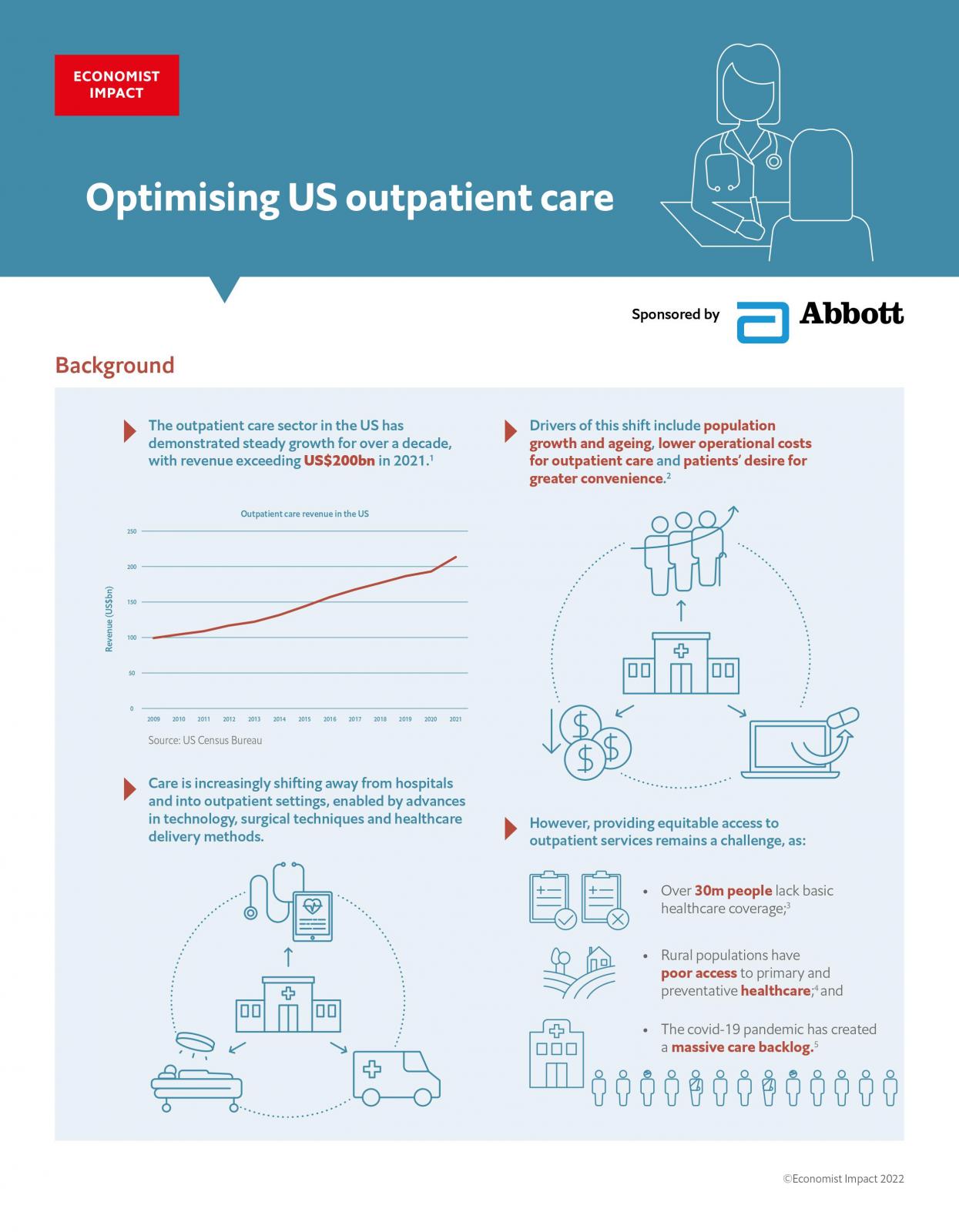This shift has been enabled by advances in technology, surgical techniques, and innovation in healthcare delivery methods, and have been further driven by factors like lower cost of care and reduced resource utilization in outpatient versus inpatient settings. However, equitable access to outpatient services remains an issue.
The article is part of a series on improving decision-making across different settings and contexts. It explores opportunities to leverage innovations and technologies to achieve the full potential of outpatient care in the US, including:
-
Using telemedicine to improve access to outpatient care services for rural populations to increase the efficiency and convenience of care, and reduce unnecessary hospital admissions.
-
Investing in specially equipped vehicles that can be used as mobile health clinics to provide access to a range of outpatient services in under-served areas.
-
Leveraging point-of-care-testing that could facilitate essential investigations to be brought out of the laboratory and nearer to the patient, producing rapid test results and facilitating timely diagnosis and treatment in the same setting.
-
Utilizing minimally invasive surgical techniques and ambulatory surgical centers to allow an increasing range of procedures to be performed in an outpatient setting, alleviating pressure on hospitals.
-
Facilitating data sharing between patients, providers, and payers using standardized electronic health records (EHRs) which could strengthen the impact of these new technologies and innovations and streamline care pathways.
Article:
Infographic:







